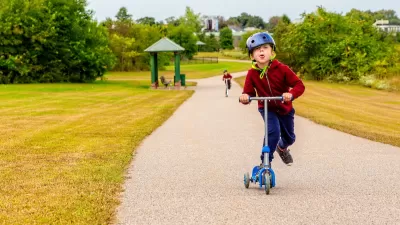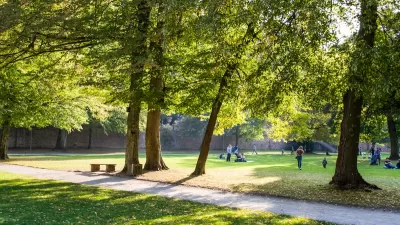A recent study from the University of Melbourne demonstrates the positive impacts small urban greening projects can have on city ecosystems.

Urban greening is typically defined as the introduction or enhancement of vegetation in city settings and includes a wide range of initiatives, including (but not limited to) the development of large public parks, creation of community gardens, rooftop green spaces, and vertical gardens on building facades. In this article, Chrissy Sexton reports that a new study in Australia shows that even small urban greening projects can have real positive impacts on local biodiversity.
The study involved greening a 195-square-meter (2,099 square-foot) plot in Melbourne, surrounded by streets and buildings. The researchers measured the baseline insect numbers before planting twelve indigenous plant species. After three years, they found that increasing the diversity of native plants in the space led to more than seven times as many insect species. These findings bolster the increasingly recognized idea that integrating nature into urban environments and restoring urban degraded lands into parks and open space is not only good for human residents, but also plays a critical role in enhancing biodiversity and combating the repercussions of climate change.
FULL STORY: Small greening projects can dramatically boost urban biodiversity

Planetizen Federal Action Tracker
A weekly monitor of how Trump’s orders and actions are impacting planners and planning in America.

Congressman Proposes Bill to Rename DC Metro “Trump Train”
The Make Autorail Great Again Act would withhold federal funding to the system until the Washington Metropolitan Area Transit Authority (WMATA), rebrands as the Washington Metropolitan Authority for Greater Access (WMAGA).

The Simple Legislative Tool Transforming Vacant Downtowns
In California, Michigan and Georgia, an easy win is bringing dollars — and delight — back to city centers.

DC Backpedals on Bike Lane Protection, Swaps Barriers for Paint
Citing aesthetic concerns, the city is removing the concrete barriers and flexposts that once separated Arizona Avenue cyclists from motor vehicles.

In These Cities, Most New Housing is Under 441 Square Feet
With loosened restrictions on “micro-housing,” tiny units now make up as much as 66% of newly constructed housing.

Albuquerque’s Microtransit: A Planner’s Answer to Food Access Gaps
New microtransit vans in Albuquerque aim to close food access gaps by linking low-income areas to grocery stores, cutting travel times by 30 percent and offering planners a scalable model for equity-focused transit.
Urban Design for Planners 1: Software Tools
This six-course series explores essential urban design concepts using open source software and equips planners with the tools they need to participate fully in the urban design process.
Planning for Universal Design
Learn the tools for implementing Universal Design in planning regulations.
Smith Gee Studio
City of Charlotte
City of Camden Redevelopment Agency
City of Astoria
Transportation Research & Education Center (TREC) at Portland State University
US High Speed Rail Association
City of Camden Redevelopment Agency
Municipality of Princeton (NJ)





























